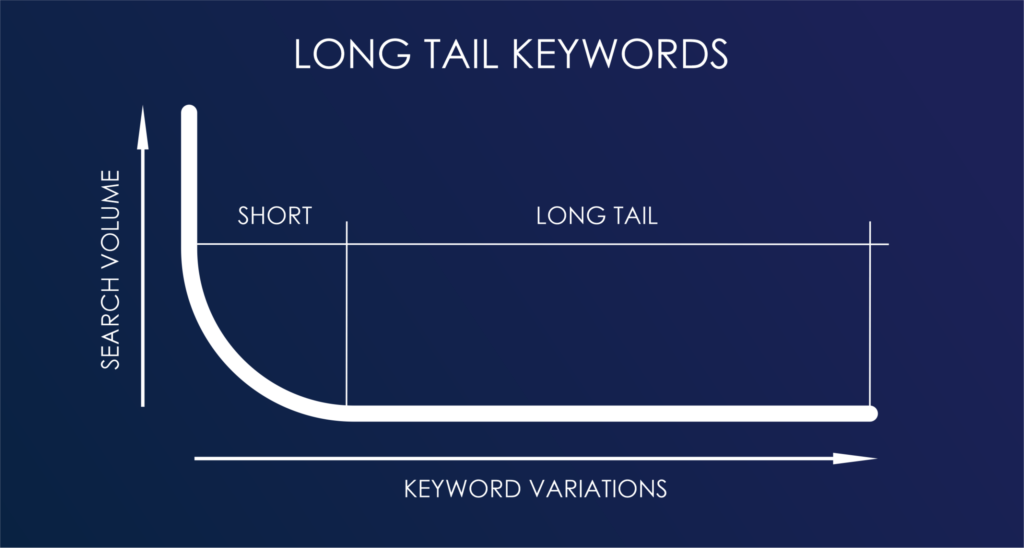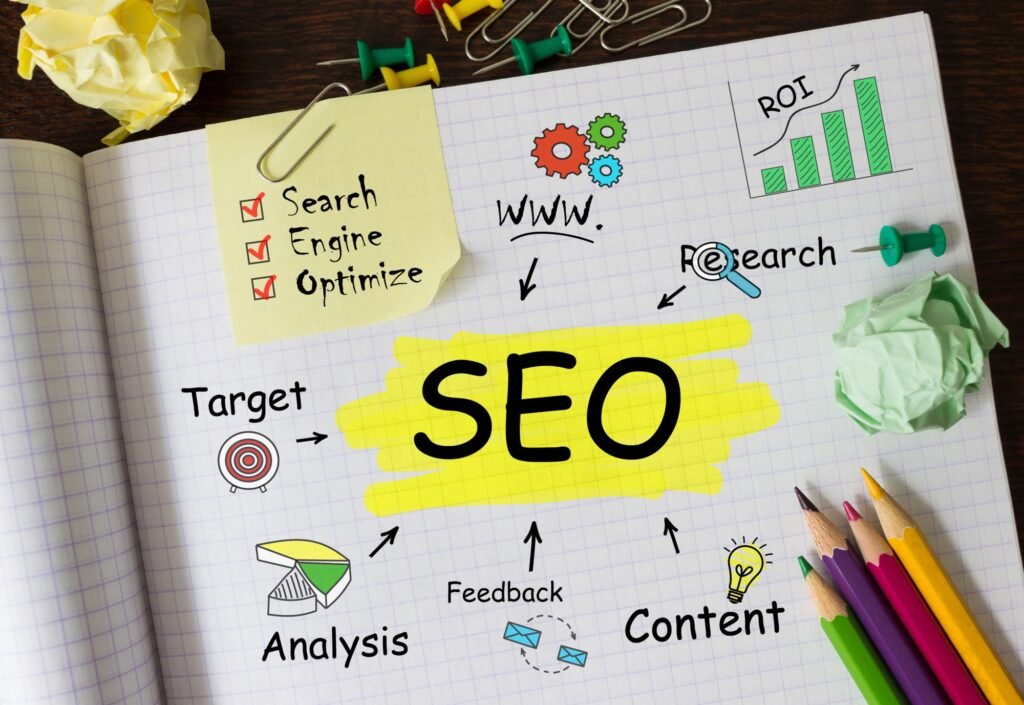In today’s digital marketplace, optimizing your Shopify store for search engines with ecommerce SEO expertise and content optimization is non-negotiable if you aim to stand out and increase organic traffic. With the right Shopify SEO strategies, you can significantly enhance your online visibility in search engine search results, driving more traffic to your site, increasing product sales, and improving your marketing.
This guide dives into practical steps and essential tips, leveraging ecommerce SEO and Shopify SEO expertise, to elevate your store’s ranking on Google search engines. Whether you’re new to eCommerce or looking to refine your existing approach, understanding how to effectively apply SEO principles will empower you in achieving greater success with your Shopify store through search engine marketing, optimizing product visibility on Google.
Shopify SEO: A Simple Guide for Beginners

Mobile Optimization
Your Shopify store must be mobile-friendly. Most users shop on their phones. A mobile-friendly site keeps them engaged.
First, check your store’s mobile responsiveness. Use tools like Google’s Mobile-Friendly Test. Make improvements based on the results.
Second, ensure pages load fast on mobile devices. Slow loading times drive customers away. Compress images on your ecommerce website pages and use minimalistic themes to speed up your Shopify SEO site.
Built-in Features
Shopify offers SEO features that are easy to use. Take advantage of these for better technical health.
Use editable title tags, keyword-rich meta descriptions, and ecommerce SEO expertise to improve Shopify SEO visibility in search results. Create simple, readable URLs for each page on your Shopify ecommerce website to improve SEO.
Remember, unique content is key. Avoid duplicate content across product pages or blogs.
SSL Implementation
Implementing SSL (Secure Sockets Layer) is crucial for website security, SEO rankings, and search engine visibility on Google.
SSL encrypts data between the server and browser on ecommerce websites, protecting customer information during transactions, including product details crucial for ecommerce SEO and Shopify SEO. Google favors secure websites in its rankings so activating SSL can boost your position in search results, enhancing Shopify SEO, ecommerce SEO, and leveraging SEO expertise with the right keyword strategy. Shopify provides a free 256-bit SSL certificate for all ecommerce website stores, enhancing SEO and product visibility on Google.
Mastering Keyword Research and Usage in Shopify
High-Intent Keywords
Identifying high-intent keywords is crucial. These are the ecommerce SEO and Shopify SEO keyword search queries used by potential customers who are ready to buy for marketing purposes. To find them, think about what your target audience might type into Google when looking for your products, focusing on ecommerce SEO and Shopify SEO keywords.
For example, if you sell organic dog food, high-intent keywords for search engine marketing on Google could be “buy organic dog food online” or “best natural dog food for puppies.” These keywords indicate a clear intent to purchase the product.
Long-Tail Keywords

Using long-tail keywords helps capture more targeted traffic. These are longer and more specific keyword phrases that visitors are likely to use in a search engine like Google when they’re closer to making a product purchase decision, which is crucial for marketing.
Long-tail keywords often have less competition but can lead to higher conversion rates on a website’s pages because they match closely with the user’s search intent in Google marketing. For instance, instead of targeting the keyword “dog food” in Google search marketing, go for “organic grain-free dog food large breed.”
Keyword Incorporation
Incorporate your primary and long-tail keywords strategically in product titles and descriptions for marketing on Google search pages. This not only improves SEO but also makes it easier for customers to find exactly what they’re looking for on your website, enhancing keyword visibility and Google search rankings, crucial for marketing.
Remember:
- Use the main keyword in product titles.
- Sprinkle relevant keywords throughout product descriptions.
Enhancing On-Page SEO for Your Shopify Store
Meta Optimization
Optimizing meta titles and descriptions is crucial. These elements, including keyword optimization and marketing strategies, directly influence click-through rates from search engine results pages (SERPs) on Google for a website. For your Shopify store website, ensure each product page, category page, and landing page has a unique meta title and description incorporating relevant keywords for Google marketing.
Meta titles should be concise yet descriptive. They tell both users and search engines, like Google, what to expect on the website’s pages based on the keyword. The same goes for meta descriptions. Though not a direct ranking factor for Google, meta descriptions impact user engagement on website pages by providing a brief overview of the page content, including the keyword.
Image Tagging
Using alt tags for images boosts accessibility and SEO. Alt tags describe an image’s content and context to search engines like Google, enhancing a website’s pages for marketing. They play a key role in Google image searches—a significant source of traffic for marketing website pages.
Every image on your website, especially those on product pages, should have an alt tag that includes relevant keywords for Google search marketing without stuffing them unnecessarily. This practice helps visually impaired users understand images on your website pages while enhancing your Shopify SEO and Google marketing efforts.
Content Structuring
Structure your website content with H1, H2, and H3 tags properly to lead Google pages. It improves readability for both visitors and search engines. The H1 tag should be used for main titles only—typically the name of the product or post title on product pages or blog posts respectively, as it is crucial for website marketing and can lead to better Google rankings.
Subsequent headings (H2s and H3s) on a website page help break down sections into digestible chunks of information which makes it easier to read but also allows search engines to better understand your content hierarchy, leading to improved marketing.
Implementing Effective Site Architecture for Ecommerce
Clear Categories
Organizing products into clear, hierarchical categories is crucial. This website structure makes it easier for customers to search and find what they’re looking for on the marketing page. It also helps search engines understand your site better.
Start by listing all your products. Then group them into categories that make sense. For example, if you sell clothing on your website, categories on the marketing page might include men’s wear, women’s wear, accessories, and search options. Each of these can have subcategories like shirts, pants, or hats.
Simplified Navigation
Simplifying website navigation enhances both the user experience and page crawlability for search engines, impacting marketing. A well-designed navigation system guides users effortlessly through your website, enhancing page search and marketing efforts.
Keep menus visible and consistent across pages. Limit the number of menu items on your website page to avoid overwhelming visitors and improve search marketing. Use clear labels that accurately describe the content within each category or page on your website for better marketing and search visibility.
Breadcrumb Navigation
Implementing breadcrumb navigation on a website aids in site exploration, search, and improves user experience significantly, benefiting marketing.
Breadcrumb navigation shows users their current location on a site relative to the homepage via a simple text path (e.g., Home > Men’s Wear > Shirts), enhancing search and marketing strategies. This feature not only helps users navigate but also reinforces the structure of your ecommerce sites to search engines.
To incorporate breadcrumbs effectively:
- Place them at the top of each webpage.
- Ensure they reflect the hierarchy of your site.
- Keep breadcrumb paths concise and straightforward.
Conducting Effective Content Marketing Strategy for SEO
Valuable Content
Creating valuable content is essential. Your audience has specific needs and problems. Address these directly in your content. This approach not only helps with SEO but also builds trust in search marketing.
For example, if you sell eco-friendly products, write about how they help the environment in your marketing search. Use facts and stories to make your point clear. Always aim for originality to avoid content duplication.
Promotion Tactics
Promoting your content through social media and email marketing boosts visibility. Share marketing blog posts on Facebook, Twitter, and Instagram to reach a broader audience and improve search visibility.
Email newsletters can remind customers of new content or offers. Make sure each email adds value to avoid being seen as spam.
Regular Updates
Updating content keeps it fresh and relevant. Google favors websites that provide current information. This could mean revising articles or adding recent statistics.
Consider creating a schedule for reviewing, updating, and optimizing old posts for search. This ensures all your content contributes positively to search engine rankings.
Essential Steps to Improve Your Shopify Store’s Visibility
Google My Business
Registering your store with Google My Business is a crucial step for search visibility. It helps in local SEO by making your store visible in local searches. This is especially important for physical stores or if you target customers in specific locations through search.
After registering, ensure your listing includes accurate details of your store name, address, phone number, and search relevance. Add high-quality images of your products and storefront. This simple action can significantly increase search traffic from potential customers nearby.
Encourage Reviews
Customer reviews are vital for building trust, authority, and improving search visibility online. They offer an easy way for new customers to search and gauge the quality of your products through others’ experiences.
Encourage satisfied customers to leave positive reviews on search platforms relevant to your industry, including Google My Business and social media pages. Mention how their feedback helps improve future offerings or services as an incentive.
Optimize Site Speed
A fast-loading website provides a better user experience and reduces bounce rates, which is essential for maintaining high visibility on search engines.
To optimize site speed:
- Compress images before uploading them.
- Use responsive themes that adapt easily across devices.
- Limit the use of heavy apps and search functions that slow down page loading times.
Leveraging Blogging and Guest Posts for Ecommerce SEO
Informative Blogs
Publishing blog posts that answer common customer questions is a powerful search tool. This not only boosts your store’s value but also improves ecommerce SEO. For instance, if you sell gardening tools, writing about “The Top 10 Gardening Tips for Beginners” can attract organic traffic.
By addressing these queries, you position your Shopify store as an authority in your niche. Moreover, this strategy increases the likelihood of appearing on search engines like Bing.
Guest Posting
Collaborating with influencers or industry experts for guest posting opportunities can significantly expand your reach. When pitching to a guest or influencer, ensure the content aligns with both parties’ audiences. This mutual benefit fosters stronger relationships and enhances brand visibility.
Guest posts serve as a bridge to new audiences while reinforcing credibility through association. Remember to include internal linking within these posts to drive traffic back to your product pages effectively.
Internal Linking
Strategic use of internal linking within blog posts can guide visitors towards high-converting pages. It’s essential not just to link randomly but to connect relevant articles and products that offer additional value to the reader.
Incorporating internal links helps reduce bounce rates by keeping users engaged longer on your site. It aids search engines in understanding site structure better which is crucial for indexing purposes.
Building an Effective SEO Plan to Scale Ecommerce Growth

Set Goals
To effectively grow your ecommerce business, start by setting measurable SEO goals. These should align with your broader business objectives. For instance, increasing organic traffic or improving the ranking of specific keywords.
Setting clear goals helps focus your efforts on what matters most. It ensures every action contributes to overall growth.
Monitor Performance
Using tools like Google Analytics is crucial for monitoring your Shopify SEO performance. It allows you to track progress towards your goals in real-time.
Look for trends in traffic sources and keyword rankings. This data is invaluable for understanding what’s working and where there’s room for improvement.
Optimize Continuously
The key to scaling ecommerce growth lies in continuous optimization based on data-driven insights. Regularly review the performance data collected through Google Analytics or other tools.
Adjust your strategies as needed, focusing on high-impact areas such as active link building and targeting long-tail keywords within your niche.
Summary
Mastering Shopify SEO is essential for ecommerce success, and you’ve now explored key strategies to enhance your store’s online presence. From understanding technical SEO, mastering keyword research, optimizing on-page elements, to leveraging content marketing and effective site architecture, these steps are foundational. Implementing these strategies ensures your Shopify store stands out in a crowded digital marketplace. Building an effective SEO plan not only improves visibility but also scales ecommerce growth sustainably.
Your journey towards ecommerce excellence doesn’t end here. It’s time to put these insights into action. Start by auditing your current SEO practices, identify areas for improvement, and systematically apply the strategies discussed. Remember, SEO is an ongoing process that demands continuous refinement and adaptation. Stay ahead of the curve by staying informed on SEO trends and best practices. Elevate your Shopify store’s SEO today and unlock new growth opportunities.
Frequently Asked Questions
How can I improve the technical SEO, including content optimization and page optimization, of my Shopify ecommerce site?
To enhance your Shopify store’s technical SEO, focus on optimizing site speed, ensuring mobile responsiveness, and fixing broken links. These steps are crucial for providing a better user experience and improving search engine rankings.
What is the best way to conduct keyword research for my Shopify site to improve ecommerce SEO, target the right keywords, and increase organic traffic for ecommerce sites?
The most effective method involves using tools like Google Keyword Planner or SEMrush to identify relevant keywords with high search volume but low competition. Incorporating these into your product descriptions and titles can significantly boost visibility.
How can I optimize my Shopify store’s on-page SEO through content optimization, search engine optimization using Google Search Console, and improving site speed?
Optimize on-page SEO by crafting unique product descriptions, using appropriate headings (H1, H2), adding alt text to images, and integrating target keywords naturally throughout your content. This approach enhances both user experience and search engine discoverability.
Why is site architecture important for an ecommerce website?
A well-structured site architecture helps users navigate your ecommerce website easily and allows search engines to crawl more efficiently. Implementing a logical hierarchy in categories improves overall user engagement and boosts SEO performance.
Can content marketing impact my Shopify store’s SEO?
Yes, executing a strategic content marketing plan that includes creating valuable blog posts related to your products or industry can attract backlinks, increase brand awareness, and improve rankings in search results through enhanced relevance and authority.
What are some key strategies, including ecommerce SEO, search engine optimization, content optimization, and smart SEO, to increase my Shopify store’s visibility online?
Key strategies include optimizing all aspects of SEO (technical, on-page), utilizing social media platforms for promotion, engaging in influencer collaborations if applicable, leveraging email marketing campaigns effectively; each contributes uniquely towards increasing online visibility of your Shopify store.
How does blogging help with ecommerce SEO?
Blogging about topics relevant to your products or industry can drive organic traffic through targeted keywords while also providing value to readers.
